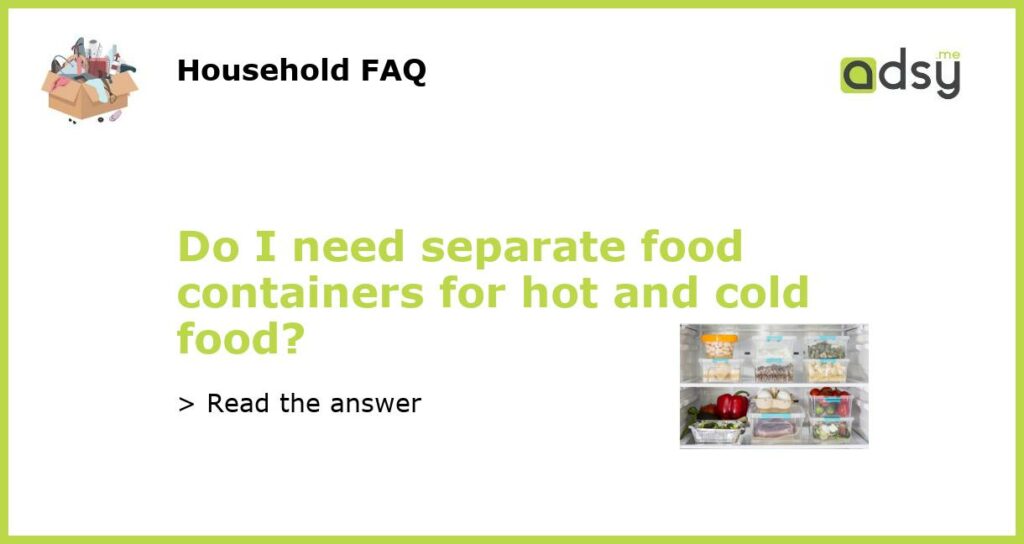Food containers come in all shapes and sizes. Whether you’re packing a lunch for work, a picnic or just storing leftovers, there are a few important factors to consider. One of the most common questions when it comes to food containers is whether you need separate ones for hot and cold food. Let’s explore this topic in more detail.
Hot and Cold Food Containers
When it comes to food containers, it’s important to consider the temperature of the food you’re storing. If you’re packing hot food such as soup or pasta, you’ll want a container that is insulated to keep the food warm until you’re ready to eat it. Some examples of insulated containers include thermoses and insulated lunch boxes.
Alternatively, if you’re packing cold food like fruit or salad, you don’t need an insulated container. Instead, you can use a regular food container or even a plastic bag to keep food fresh and cool until you’re ready to eat it.
Food Safety
When it comes to food safety, it’s important to keep hot food hot and cold food cold. According to the USDA, harmful bacteria can grow rapidly in foods that are left at room temperature for more than two hours. To keep hot food hot, it should be stored above 140°F (60°C) and to keep cold food cold, it should be stored below 40°F (4°C).
To make sure your food is safe to eat, it’s recommended to use separate containers for hot and cold food. This will prevent cross-contamination and ensure that your food stays at the correct temperature until you’re ready to eat it.
Reusable Containers
If you’re packing your lunch or storing leftovers, using reusable food containers is a great way to reduce waste and save money. When choosing reusable containers, it’s important to consider the materials they’re made from. Glass and stainless steel are both great choices for hot and cold food, as they are durable and can be easily cleaned. Additionally, they are BPA-free and don’t contain any harmful chemicals that can leach into your food.
Plastic containers should be avoided when storing hot food, as they can release harmful chemicals when heated. If you do plan on using plastic containers, make sure they are labeled as microwave-safe and avoid heating them for long periods of time to prevent leaching of chemicals into your food.
When it comes to food containers, there are many options available for hot and cold food. It’s important to consider the temperature of the food you’re storing as well as food safety guidelines to ensure your food stays fresh and safe to eat. Using separate containers for hot and cold food is recommended to prevent cross-contamination and maintain the correct temperature until you’re ready to eat it. Choosing reusable containers made from durable and safe materials is also beneficial for both your health and the environment.




![[10-Pack]Glass Meal Prep Containers -MCIRCO Food Storage Containers with Lifetime Lasting Snap Locking Lids, Airtight Lunch Containers, Microwave, Oven, Freezer and Dishwasher](https://m.media-amazon.com/images/I/41ZdkMs1ciL.jpg)

